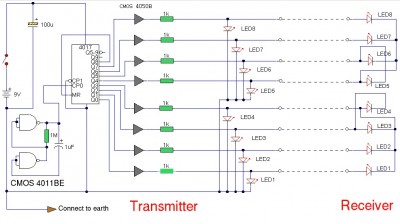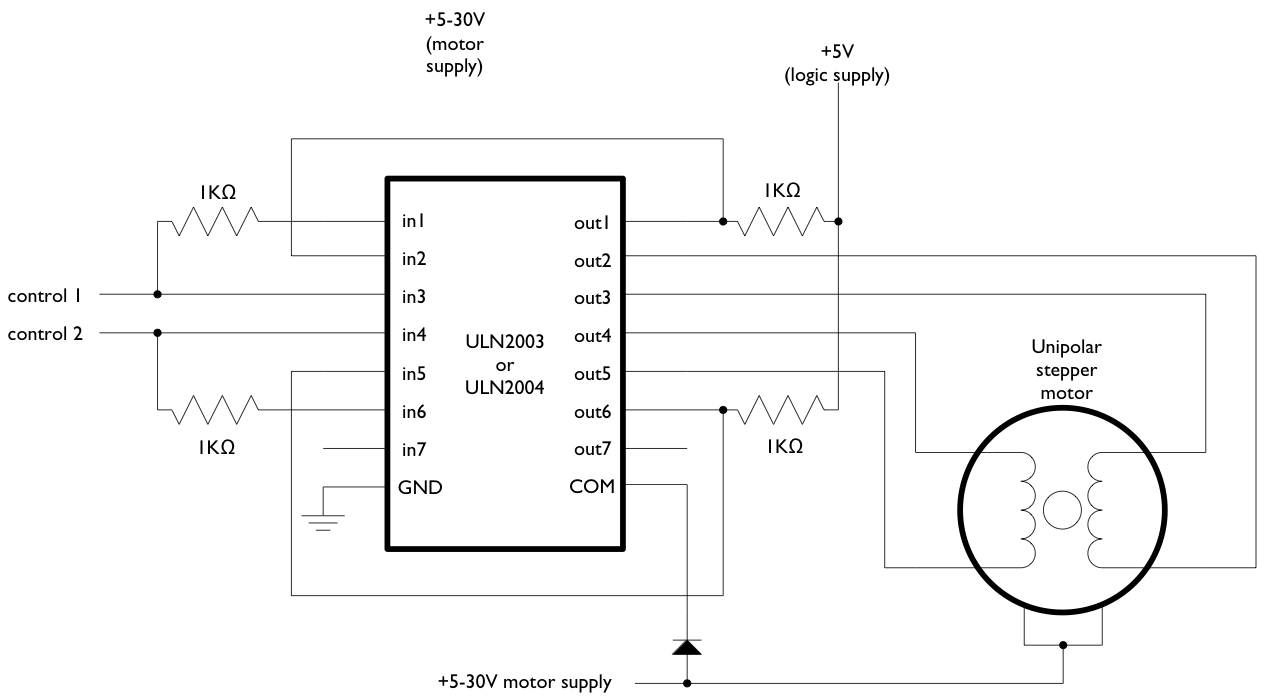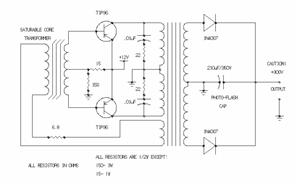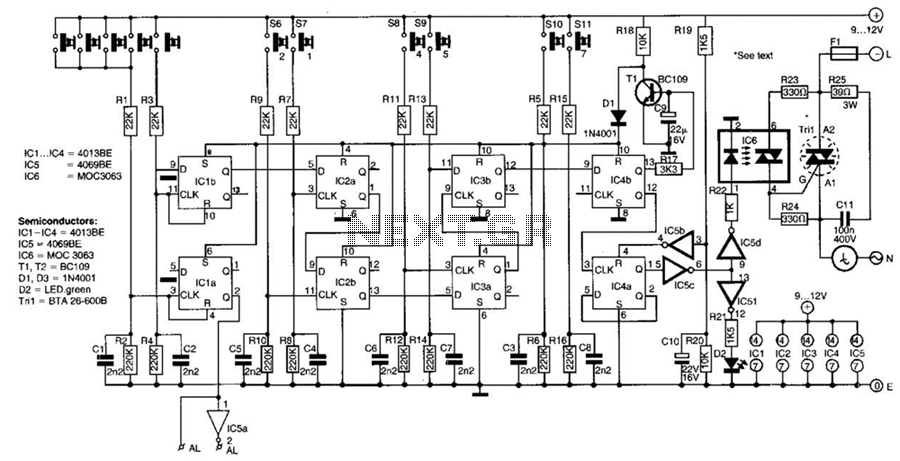
PWM inverter circuit based on SG3524 : 12V input 220V output 250W
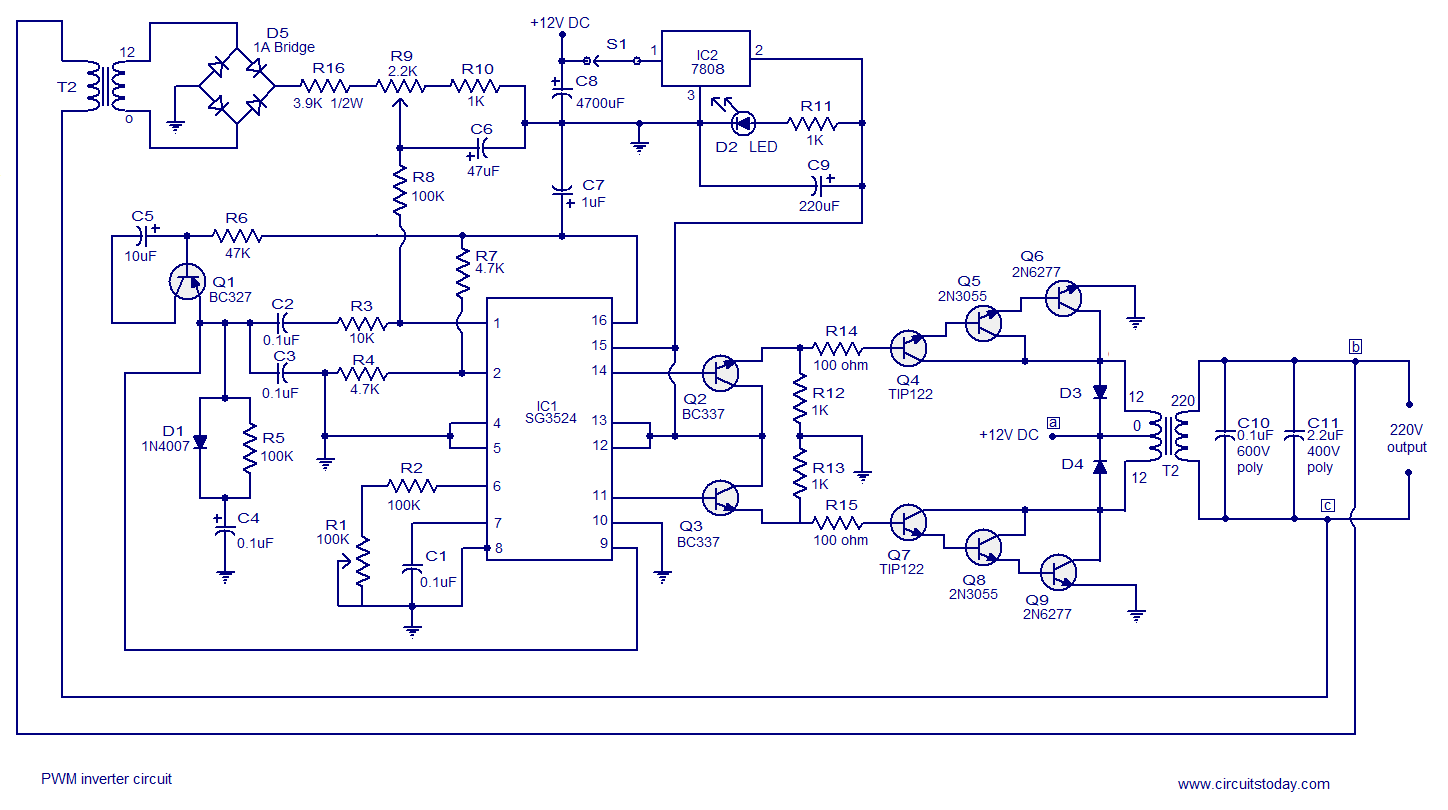
A simple PWM inverter circuit utilizes the SG3524 integrated circuit. This PWM inverter is designed for a 12V input, providing a 220V output with a maximum output power of 250 watts. The output power can be extended further.
The described PWM inverter circuit employs the SG3524, a versatile PWM controller known for its efficiency in generating pulse-width modulation signals. The circuit operates with a 12V DC input, which is typically sourced from batteries or solar panels, making it suitable for off-grid applications or backup power systems.
The SG3524 is configured to generate a square wave output that drives a transformer, stepping up the voltage from 12V to 220V. The transformer is a crucial component, as it not only increases the voltage but also provides electrical isolation between the input and output, enhancing safety. The design can be adjusted to achieve a maximum output power of 250 watts, which is suitable for powering small appliances, lighting, or electronic devices.
To extend the output power beyond 250 watts, modifications can be made to the transformer and the switching components. This may include using a transformer with a higher power rating or paralleling multiple SG3524 circuits to share the load. Additionally, careful consideration must be given to heat dissipation and component ratings to ensure reliable operation under higher loads.
The circuit layout should include proper decoupling capacitors near the SG3524 to minimize noise and improve stability. Furthermore, incorporating feedback mechanisms can enhance the regulation of the output voltage, ensuring consistent performance under varying load conditions. Overall, this PWM inverter circuit presents a practical solution for converting low-voltage DC into high-voltage AC, with the flexibility to adapt to various power requirements.Simple PWM inverter circuit using SG3524. This PWM inverter circuit has 12V input, 220V output and 250 watt output power. Output power can be extended.. 🔗 External reference
The described PWM inverter circuit employs the SG3524, a versatile PWM controller known for its efficiency in generating pulse-width modulation signals. The circuit operates with a 12V DC input, which is typically sourced from batteries or solar panels, making it suitable for off-grid applications or backup power systems.
The SG3524 is configured to generate a square wave output that drives a transformer, stepping up the voltage from 12V to 220V. The transformer is a crucial component, as it not only increases the voltage but also provides electrical isolation between the input and output, enhancing safety. The design can be adjusted to achieve a maximum output power of 250 watts, which is suitable for powering small appliances, lighting, or electronic devices.
To extend the output power beyond 250 watts, modifications can be made to the transformer and the switching components. This may include using a transformer with a higher power rating or paralleling multiple SG3524 circuits to share the load. Additionally, careful consideration must be given to heat dissipation and component ratings to ensure reliable operation under higher loads.
The circuit layout should include proper decoupling capacitors near the SG3524 to minimize noise and improve stability. Furthermore, incorporating feedback mechanisms can enhance the regulation of the output voltage, ensuring consistent performance under varying load conditions. Overall, this PWM inverter circuit presents a practical solution for converting low-voltage DC into high-voltage AC, with the flexibility to adapt to various power requirements.Simple PWM inverter circuit using SG3524. This PWM inverter circuit has 12V input, 220V output and 250 watt output power. Output power can be extended.. 🔗 External reference
Warning: include(partials/cookie-banner.php): Failed to open stream: Permission denied in /var/www/html/nextgr/view-circuit.php on line 713
Warning: include(): Failed opening 'partials/cookie-banner.php' for inclusion (include_path='.:/usr/share/php') in /var/www/html/nextgr/view-circuit.php on line 713
